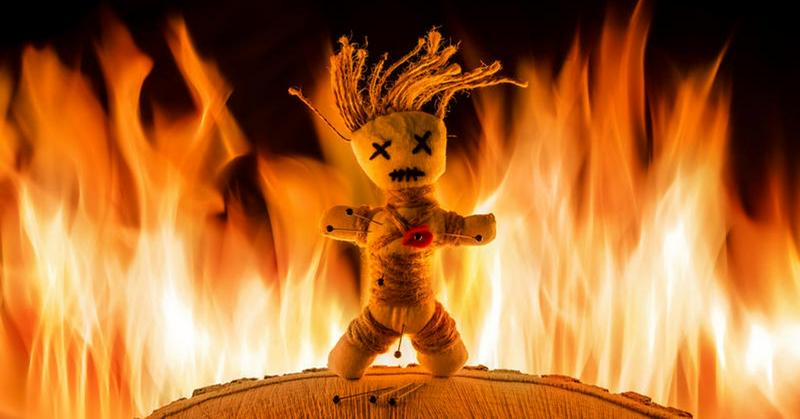Marie Laveau, The Voodoo Queen
By | October 18, 2021

If there was ever a true queen of Voodoo, it was Marie Laveau, a Creole woman born in 1801 to white politician Charles Laveau and free black woman Marguerite Darcantel, who raised her on the father's plantation. As a young woman, Marie moved into the New Orleans French Quarter, where she blossomed as a hairdresser and well-respected practitioner of Voodoo. Laveu's Voodoo was somewhat unique, however, as she was likewise a devout Catholic who infused her practice with Christian beliefs like the power of holy water, candles, and imagery of saints.
Laveau's first husband, Jacques Paris, mysteriously vanished, and though he is believed to have died in 1820, no one is quite sure how. That didn't stop Marie from referring to herself as the Widow Paris for the rest of her life, which is a little awkward, considering she spent most of it with businessman Christopher de Glaipon, with whom she had seven children (although they never married due to contemporary laws against interracial marriage). Interestingly, though Laveau herself was black, she and Glaipon owned at least seven slaves in their lifetimes, though it's not known how these slaves were treated and it's important to note the difference between Louisiana's French laws and the English laws which ruled most of the United States, the latter of which was more restrictive about slavery and treated race in more absolute terms.

Not much is known about the legendary Voodoo queen, but her abilities seemed to have arisen naturally from her hairdressing days, when she heard the confessions and woes of her wealthy clients and offered her own sage advice. On Sundays, Laveau went to Congo Square—the most unsegregated part of the city, where people of all races and classes co-mingled—to sell amulets and charms and perform rituals and readings for a spellbound clientele.
Eventually, Laveau made her way to Maison Blanche, an underground Voodoo club, where she put on more elaborate shows and grew a larger band of followers. Eventually, she had a big enough fan base to host in her own stately home on St. Ann Street. In these performances, she used snakes to evoke the spirit of the Great Zombi, or Damballa, a benevolent and wise god who is said to guide mortals through the many ups and downs of everyday life, interpreting the snake's hisses and relaying the Great Zombi's guidance to her audience. Music, singing, and dancing were also staples of Laveau's spiritual performances. Good times and good advice—that was the Voodoo queen way.

Laveau's services to the community were not limited to her talents, however. She spent a great deal of time and energy learning herbalism, developing treatments for illnesses, and volunteering as a nurse for patients suffering from yellow fever. She was also a champion for the incarcerated, posting bail or praying with death row inmates in their final hours.
Laveau did well in life, but as beloved as she was, many of her time still shunned Voodoo and its practices, labeled it occult or immoral in nature, and discouraged Christians from taking part in rituals. Still, whether or not Laveau had supernatural powers, she certainly had the power of giving good advice, which made her a valuable part of the New Orleans community and landed her on the pages of local history.

